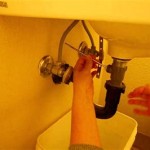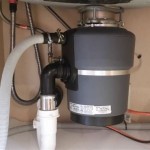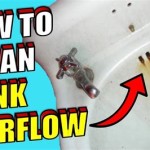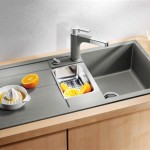Understanding Bathroom Sink Pop-Up Drain Parts
The bathroom sink pop-up drain is a common plumbing fixture designed to efficiently manage wastewater while also offering a convenient mechanism for water retention. Its simple functionality belies a more complex assembly of interconnected parts, each crucial for the system’s overall performance. A comprehensive understanding of these components is essential for effective troubleshooting, repair, and replacement procedures. This article will delve into the anatomy of a pop-up drain, outlining the function of each part and highlighting potential issues that may arise.
The pop-up drain assembly typically comprises several key components, including the stopper, flange, drain body, pivot rod, clevis strap, extension rod, and mounting hardware. Each of these elements plays a specific role in the operation of the drain, working in concert to provide a reliable and functional system. Disassembling the drain often reveals wear and tear, corrosion, and build-up of debris that can impede its performance. Regular maintenance and prompt repairs are essential to ensure the longevity and optimal functionality of the pop-up drain.
The Stopper and Flange: The Visible Interface
The stopper is the primary component visible within the sink basin. Its primary function is to create a watertight seal, preventing water from escaping down the drain when engaged. Stoppers are typically made from brass, stainless steel, or plastic and may be coated with a finish to match the faucet and other bathroom fixtures. The design of the stopper can vary; some feature a simple flat surface, while others have a more complex, contoured shape to improve sealing.
The flange is the metal ring that surrounds the stopper and sits flush against the sink basin. It provides a secure mounting point for the stopper assembly and contributes to the overall aesthetic of the fixture. The flange is usually made of brass, stainless steel, or a similar durable material that can withstand constant exposure to water. A rubber or silicone gasket is typically placed between the flange and the sink basin to create a watertight seal and prevent leaks. Over time, this gasket can degrade, leading to leaks around the base of the flange.
The connection between the stopper and the pivot rod, located beneath the sink, facilitates the raising and lowering of the stopper. This connection is crucial for the drain's operation; any damage or misalignment can prevent the stopper from sealing properly or moving freely. A common problem with stoppers is the accumulation of hair, soap scum, and other debris around the base, which can impede its movement and prevent a proper seal. Regular cleaning of the stopper is essential to maintain its functionality.
The Drain Body and Pivot Rod: The Core Mechanism
The drain body is the main housing for the pop-up drain assembly, situated directly beneath the sink. It is typically made of brass or PVC plastic and connects to the sink drain outlet. The drain body houses the pivot rod and serves as the primary channel for wastewater to flow into the drainpipe. This part is subjected to constant exposure to water and corrosive substances, making it susceptible to leaks and deterioration over time. Cracks, corrosion, or damaged threads on the drain body can lead to significant water damage if not addressed promptly.
The pivot rod is a horizontal rod that extends from the side of the drain body. It connects to the stopper via a vertical linkage and is controlled by the lift rod (also sometimes called the pop-up rod) located above the sink. When the lift rod is raised or lowered, it pivots the pivot rod, causing the stopper to move up or down, thereby opening or closing the drain. The pivot rod assembly often includes a ball joint or similar mechanism to allow for smooth movement and adjustment. This pivot point is vulnerable to wear and tear, and the rubber seals around the pivot rod can deteriorate, leading to leaks. Regular lubrication of the pivot rod can help prevent corrosion and ensure smooth operation.
The angle and position of the pivot rod are critical for proper drain function. If the pivot rod is misaligned or disconnected, the stopper will not raise or lower correctly. Adjustments can be made to the pivot rod's position to ensure proper alignment and sealing. The pivot rod is also a common point for clogs to form, as hair and debris can accumulate around the rod, impeding its movement. Regular cleaning and inspection of the pivot rod are essential for preventing these issues.
The Clevis Strap and Extension Rod: The Control System
The clevis strap is a small metal or plastic strap that connects the pivot rod to the extension rod. It typically features multiple holes, allowing for adjustments to the height and position of the stopper. The clevis strap plays a critical role in translating the vertical movement of the extension rod into the rotational movement of the pivot rod. It is essential that the clevis strap is securely fastened to both the pivot rod and the extension rod, as any looseness or slippage can cause the stopper to malfunction.
The extension rod, also known as the lift rod or pop-up rod, is the vertical rod that extends up behind the faucet. It is connected to the clevis strap at the bottom and has a handle at the top that is used to raise and lower the stopper. The extension rod's length and position are crucial for achieving the correct range of motion for the stopper. The extension rod is often made of brass or stainless steel and may be coated with a finish to match the faucet. The handle on the extension rod can become loose or damaged over time, requiring replacement or repair.
The adjustment of the clevis strap on the extension rod allows for fine-tuning of the stopper's height and sealing. By moving the clevis strap up or down on the extension rod, the amount of force applied to the pivot rod can be adjusted, ensuring that the stopper seals tightly and releases fully. The connection points on the clevis strap and extension rod are vulnerable to corrosion and wear, which can cause the connection to loosen or fail. Regular inspection and tightening of these connections are essential for maintaining proper drain function. Additionally, ensuring the lift rod is properly aligned and does not bind against the faucet body is important for smooth operation.
Mounting Hardware and Gaskets: Ensuring a Watertight Seal
The mounting hardware for a pop-up drain typically includes nuts, washers, and gaskets that are used to secure the drain body to the sink basin and create a watertight seal. The nuts and washers provide the clamping force necessary to compress the gaskets and create a leak-proof connection. These components are usually made of brass, stainless steel, or plastic and must be properly tightened to prevent leaks.
Gaskets are used at various points in the pop-up drain assembly, including between the flange and the sink basin, between the drain body and the sink drain outlet, and around the pivot rod. These gaskets are typically made of rubber, silicone, or other flexible materials and are designed to conform to the shape of the mating surfaces, creating a watertight seal. Over time, gaskets can dry out, crack, or become compressed, leading to leaks. It is essential to use high-quality gaskets that are compatible with the materials used in the drain assembly.
Proper installation of the mounting hardware and gaskets is crucial for preventing leaks. The nuts and washers should be tightened evenly to distribute the clamping force and ensure that the gaskets are properly compressed. Over-tightening can damage the gaskets, while under-tightening can result in leaks. It is important to follow the manufacturer's instructions for installation and to use the correct tools and techniques. Regular inspection of the mounting hardware and gaskets can help identify potential issues before they lead to significant water damage. Applying a small amount of plumber's grease to the threads of the nuts and bolts can help prevent corrosion and make it easier to tighten and loosen the hardware in the future.
Troubleshooting common issues with pop-up drains often involves identifying the specific part that is causing the problem. A leaky flange may indicate a worn or damaged gasket, while a stopper that does not seal properly may be due to a misaligned pivot rod or a build-up of debris. By understanding the function of each part and knowing how to inspect and maintain them, homeowners can effectively address these issues and keep their bathroom sink drains functioning properly.
In addition to the individual components, the overall build quality and materials used in the pop-up drain assembly can significantly impact its longevity and performance. Lower-quality drains may be made of less durable materials that are more prone to corrosion and wear. Investing in a high-quality pop-up drain assembly made of brass or stainless steel can provide years of reliable service and reduce the need for frequent repairs or replacements.
Ultimately, a comprehensive understanding of the parts that constitute a bathroom sink pop-up drain, coupled with regular maintenance and prompt attention to any signs of malfunction, is essential for maintaining a properly functioning plumbing system and preventing costly water damage.

Pop Up Lift Turn Pull Out Stopper Bathroom Sink Drains

Bathroom Sink Popup And Stopper Problems

Danco Plastic Pop Up Assembly In Chrome 80767 The Home

Pop Up Lift Turn Pull Out Stopper Bathroom Sink Drains

Luxier 1 5 8 In Brass Bathroom And Vessel Sink Push Pop Up Drain Stopper With Overflow Chrome Ds02 Tc The Home

Gerber Part G0043973 Bathroom Sink Metal Pop Up Drain Assembly In Chrome Drains Parts Home Pro

Pop Up Lift Turn Pull Out Stopper Bathroom Sink Drains

Universal Washbasin Water Head Leaking Stopper Bathroom Sink Drain Strainer For And Bathtub Replacement Parts Grey Wal Com

20 Bathroom Sink Drain Parts How They Works Stopper Plumbing

Sereve Valley Bathroom Sink Pop Up Drain Brass Material With Mounting Serene







